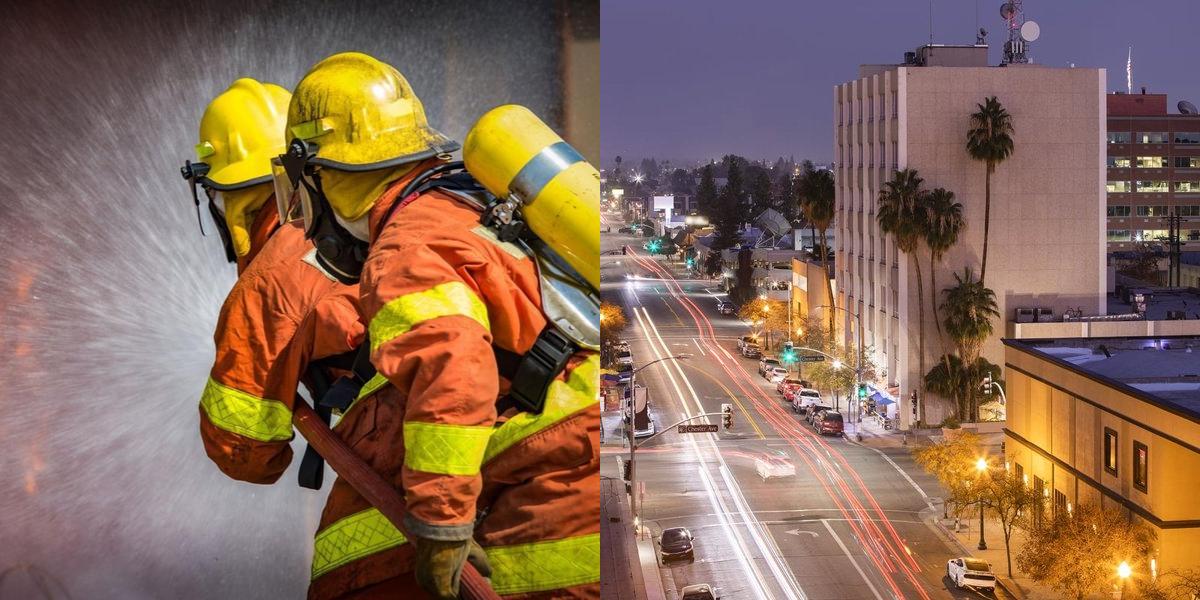How to Become a Firefighter in California

What is a Firefighter?
A firefighter is an individual who is trained to respond to various emergency situations, with a primary focus on extinguishing fires and providing assistance during natural disasters and other emergencies. Their responsibilities go beyond just fighting fires and may include conducting rescue operations, providing medical aid, and educating the public on fire safety.
Step 2: Research Fire Departments
Researching fire departments in your area is crucial to finding job opportunities. Look for fire departments that are hiring and learn about their hiring process and requirements. Many fire departments post job openings on their websites or on job boards. Additionally, you can reach out to local fire departments to inquire about any potential job opportunities.
Step 3: Prepare for the Hiring Process
The hiring process for firefighters typically involves multiple steps, including a written test, physical fitness test, interview, background check, and medical evaluation. It is important to prepare for each step of the process to increase your chances of success.
- Written Test: Review and study firefighting techniques, equipment, and procedures to prepare for the written test. There are many resources available, including study guides and practice exams, to help you prepare.
- Physical Fitness Test: Firefighting is a physically demanding job, and fire departments want to ensure that candidates are physically fit. Prepare for the physical fitness test by focusing on cardiovascular fitness, strength training, and flexibility exercises.
- Interview: Practice common interview questions and prepare thoughtful responses. Research the fire department and be prepared to discuss why you are interested in working for that particular department.
- Background Check and Medical Evaluation: Ensure that your background is clean and be prepared to provide any necessary documentation. Additionally, maintain good physical health to pass the medical evaluation.
Step 4: Apply for Firefighter Positions
Once you have prepared your resume and researched fire departments, it is time to start applying for firefighter positions. Follow the application instructions provided by each fire department and submit your application along with any required documentation.
Be prepared to apply to multiple fire departments as competition for firefighter positions can be fierce. Don't be discouraged if you don't get hired right away. Continue to improve your skills and knowledge, and keep applying to increase your chances of landing a job as a firefighter.
Career Paths and Opportunities after Becoming a Firefighter
Becoming a firefighter opens up various career paths and opportunities within the field. In this section, we will discuss some of the potential career paths and opportunities you can pursue after becoming a firefighter.
Promotions within the Fire Department
Once you have gained experience as a firefighter, you can pursue promotions within the fire department. Many fire departments have a hierarchical structure that allows firefighters to advance to higher-ranking positions. These positions may include:
- Fire Engineer: Fire engineers are responsible for operating and maintaining firefighting equipment, such as fire engines and ladder trucks.
- Fire Captain: Fire captains supervise firefighters and are responsible for managing emergency responses and ensuring the safety of personnel and the public.
- Battalion Chief: Battalion chiefs oversee multiple fire stations and are responsible for coordinating emergency responses, managing personnel, and implementing department policies.
- Fire Chief: Fire chiefs are the highest-ranking officers in a fire department and are responsible for overall management and leadership of the department.
Specialized Units
Fire departments often have specialized units that focus on specific areas of firefighting or emergency response. These units may include:
- Hazardous Materials (HazMat): HazMat teams are responsible for handling hazardous materials incidents, such as chemical spills or leaks.
- Technical Rescue: Technical rescue teams are trained to respond to specialized rescue situations, such as high-angle rescues, confined space rescues, or water rescues.
- Wildland Firefighting: Wildland firefighting involves combating wildfires in rural or wilderness areas. This type of firefighting requires specialized training and equipment.
- Arson Investigation: Arson investigators are responsible for determining the cause and origin of fires and gathering evidence for criminal investigations.
Education and Training
After becoming a firefighter, you may choose to further your education and training in the field. This can open up opportunities for teaching or training future firefighters. Many fire departments have training divisions that offer ongoing education and training programs for firefighters.
Additionally, you may choose to pursue advanced certifications or degrees in fire science, emergency management, or a related field. These credentials can enhance your knowledge and skills and make you a more competitive candidate for leadership positions within the fire department or other emergency response agencies.
Interagency Cooperation
Firefighters often collaborate with other emergency response agencies, such as law enforcement, emergency medical services, and public health departments. This collaboration can lead to opportunities for cross-training and career advancement in related fields. For example, you may choose to become a paramedic or work as a fire investigator in conjunction with law enforcement agencies.
How Much does a Firefighter Make?
The salary of a firefighter can vary based on factors such as location, experience, and the size of the fire department. According to the Bureau of Labor Statistics, the median annual wage for firefighters was $50,850 in May 2020. The lowest 10 percent earned less than $25,850, while the highest 10 percent earned more than $94,720.
For entry-level firefighters, the starting salary can be lower than the median wage. However, as they gain experience and move up the ranks, their salary can increase significantly. It's important to note that these figures are just averages, and the actual salary can vary depending on various factors.
Final Thoughts
Becoming a firefighter is a challenging and rewarding career choice. It requires dedication, physical fitness, and a desire to serve and protect the community. By obtaining your firefighter certification and going through the hiring process, you can start your journey towards a fulfilling career as a firefighter.
Remember to stay committed to ongoing training and professional development to enhance your skills and advance in your career. Consider the various career paths and opportunities available within the fire service, and be open to exploring new avenues within the field.
As a firefighter, you have the opportunity to make a positive impact on the lives of others and be a hero in times of crisis. Embrace the challenges, continue to learn and grow, and enjoy the fulfilling career that firefighting offers.
If you're exploring various professional paths, Dreambound has in-depth guides to help assist you. Explore a few of these resources below.

Blessed Joy Amarga is part of the Growth and Sales teams at Dreambound. She helps bring in new leads, increasing the number of people at the top of the sales funnel, and supporting the team in creating graphics to boost social media engagement. Blessed is also a Licensed Architect. Outside work, she enjoys traveling and exploring new places for her vlog.




